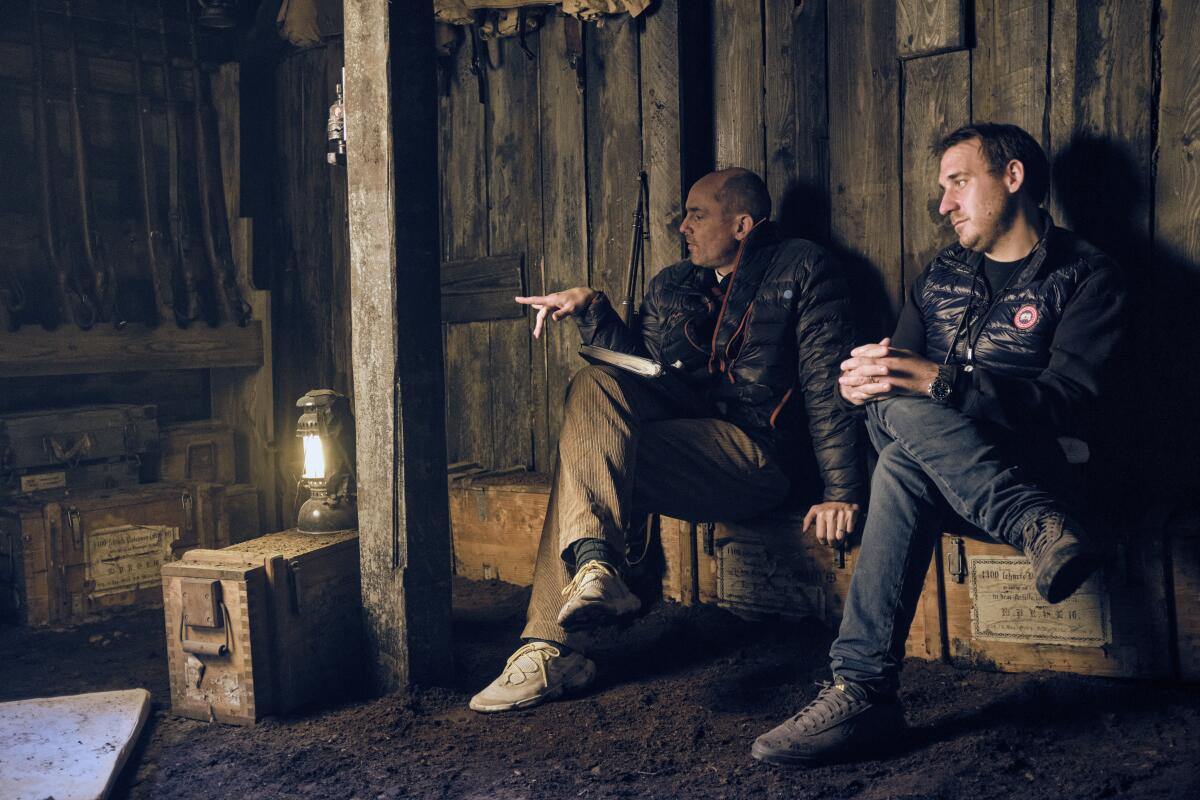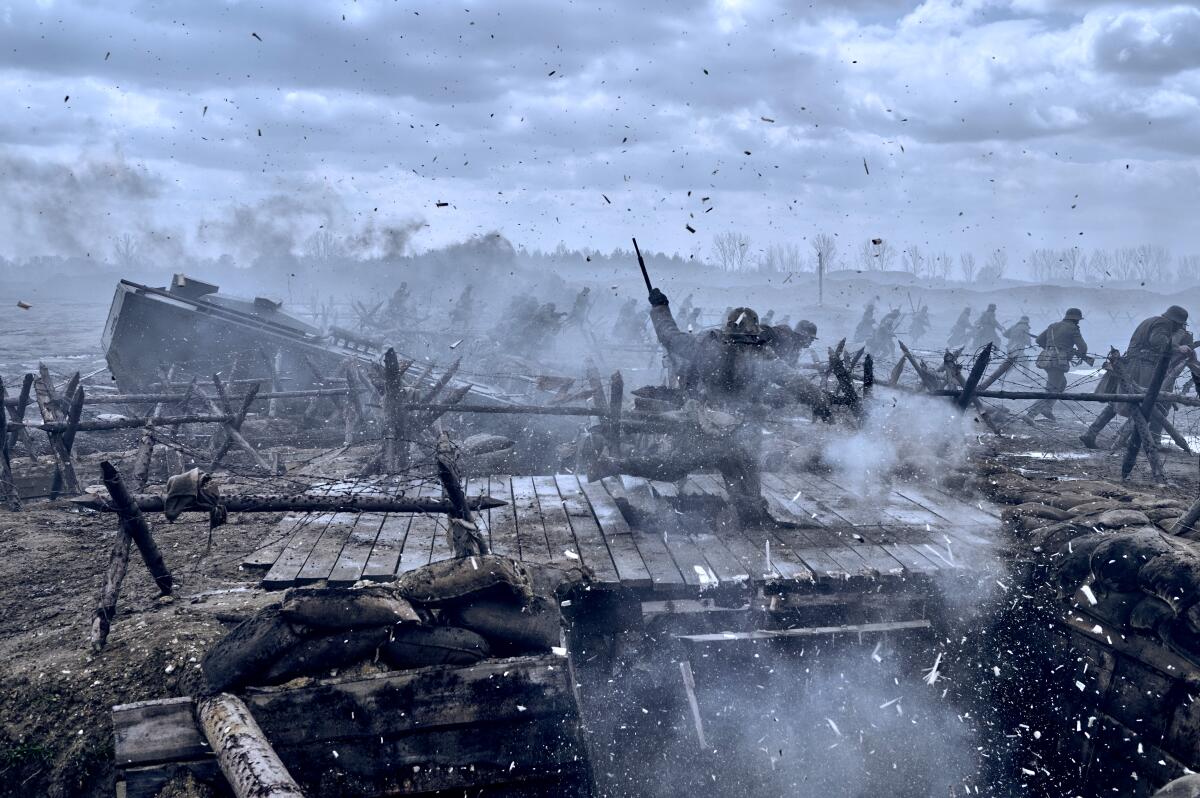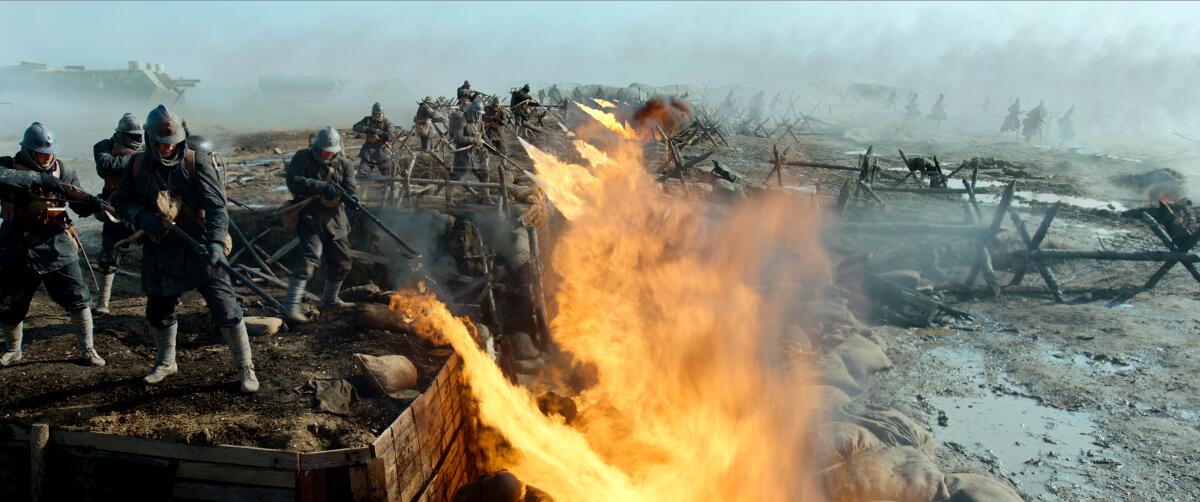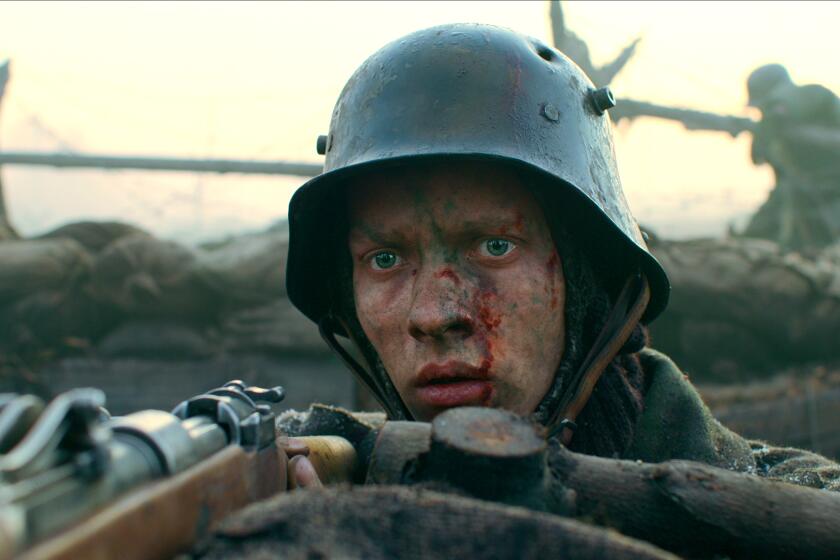Why acting skills came into play for the ‘All Quiet’ cinematographer

- Share via
Despite the possibility of landing his first Oscar nomination, James Friend had other priorities on the afternoon of Jan. 24. Namely, sleep. The U.K.-based cinematographer was trying to get some rest while in the midst of three weeks of night shoots for the upcoming “Star Wars” series “The Acolyte.” He was rudely awakened by a call from his wife, who was, understandably, screaming into the phone.
“As a natural pessimist, I tend to think the worst. So I was like, ‘What the hell’s wrong? What’s going on?’ And then she said that I’d been nominated for an Academy Award. It didn’t quite sink in,” Friend says. “I’d also only been asleep for about an hour and a half. So it was even more bizarre. I spoke to her for a bit and then the first thing I did is I ran and I threw up in the toilet because I just was in complete shock, to be perfectly honest. And then I was just trying to go back to sleep again for the next night [shoot].”
Spoiler alert: He did not fall back asleep.
The film used letters from those at war -- and their metaphorical descriptions of the sounds -- to be aurally authentic yet not pinned to “scientific” accuracy.
Friend’s cinematography nomination was one of nine for “All Quiet on the Western Front,” an adaptation of Erich Maria Remarque’s seminal 1928 novel, directed and co-written by Friend’s favorite collaborator, Edward Berger. Despite having previously won a BAFTA and two British Society of Cinematographers honors, Friend admits he’s suffering from a wee bit of “impostor syndrome” when it comes to his Oscar recognition.

He says: “As cinematographers and as filmmakers, we make films for the general public. But for someone to kind of say, ‘Well, this is a standout moment’ — because I do it a lot [myself]. I’m on a lot of voting juries every year for BSC, ASC, for the BAFTAs. So I’ve put myself in that tough position as a jury member. It is a big responsibility. Being on the other end of that kind of spectrum is a huge honor. It’s something that I don’t think I would ever experience again.”
This adaptation of “All Quiet” may feature massive and intricately shot WWI battles, but Friend’s primary concern was the responsibility involved in tackling such a beloved piece of literature, a novel that had already spawned a 1930 cinematic classic.
“You naturally have doubt in your own abilities and all this kind of stuff,” he says, “and you just think, ‘Well, what we can do is we can retell it with the justice of modern cinema and filmmaking techniques and everything that comes with.”
That approach meant an extraordinary preproduction period as Friend and Berger spent more than six weeks in a hotel room painstakingly storyboarding the entire movie. He jokingly describes it as almost “movie jail” but in the most collaborative way possible.

“We didn’t have the luxury of running a whole scene all the way through on a wide shot, because we didn’t have the budget for [extraneous] explosions or tanks or extras,” Friend says. “You run 400 extras across a battlefield, and actually, they go from one side of the frame to the other side of the frame in eight seconds. You can’t run the whole scene unless you’ve got 4,000 extras. So you need to be very disciplined with it all. It was this real exercise in shot-listing, cinematography, in editing, in directing, in everything.”
During those long days of preproduction, the pair would act out as many scenes as possible to accurately make a shot list of them, and Friend says Berger still teases him about rolling around on the hotel room floor playing a soldier. But when filming began, they were as ready as anyone could be when shooting in Eastern Europe in January and February. Friend notes, “We had snow, we had rain, we had sun, we had clouds, we had wind. We had everything that kind of naturally goes against all the elements of filmmaking.”
Despite those forces, it was the epic battle in the middle of the script that concerned him the most.
“It was just the sheer scale of maneuvering that amount of people and equipment and tanks and props and everything and tracking it with the sun and tracking it with the set,” Friend says. “Because you had these two sorts of environments working against each other. You had this enormous, vast battlefield that was the equivalent of 10 football pitches. And then you actually had a trench, which was a corridor, which was narrower than my office. And just trying to navigate that with the sun and just with that level of extras and with the environment, the mud and everything like that? That was one where we really had to hit the schedule every single day.”
Friend says he’s watched every Oscars telecast for more than 20 years and considers the awards hallowed ground. And although he’s overwhelmed by his turn in the awards season spotlight, what he does next will always depend on the story first. No matter what the result is on March 12.
“I always think I’ll be shooting short films up until the day I retire or die because I just like telling good stories, to be perfectly honest,” Friend says. “And I’ve shot some terrible films in my time. I don’t think I’ve ever shot a good film apart from this one. I think I’ve shot some OK television. But I’m absolutely honored beyond all articulation and expression to be nominated for an Academy Award.
“I mean, this is stuff that dreams are made of.”
More to Read
From the Oscars to the Emmys.
Get the Envelope newsletter for exclusive awards season coverage, behind-the-scenes stories from the Envelope podcast and columnist Glenn Whipp’s must-read analysis.
You may occasionally receive promotional content from the Los Angeles Times.










